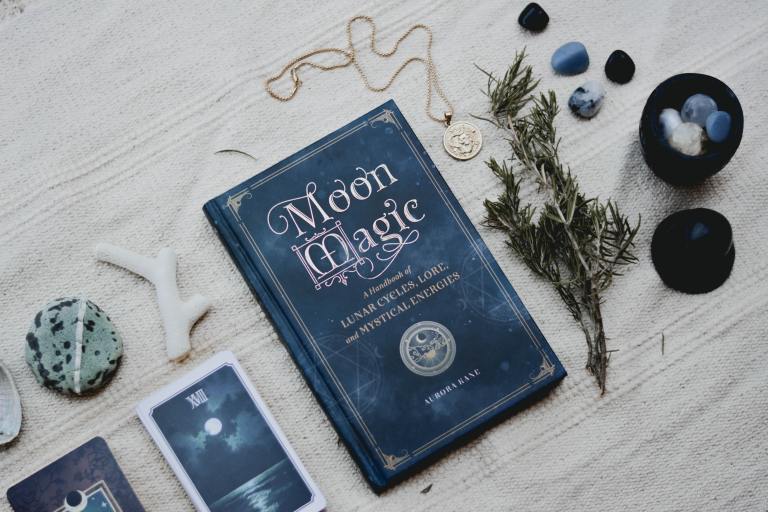Fat And Black In Hollywood
But why is Hollywood more accepting of fat black women than of fat white women? My guess is it has more to do with social politics than with the entertainment industry: Black women are invisible in America. Despite the fact that women like Michelle Obama and Oprah Winfrey are among the most public of public…

Here in America, we like our ladies thin, tall, and, preferably, blonde. Fat women don’t make it in Hollywood. No, we keep our fat women hidden in office buildings and suburban shopping malls. We—and of course I use the word “we” loosely—want our female actors, our models, our public figures of all stripes to be as gorgeous as we wish we were, as attractive as we think we’ll never be. We want our standards of beauty to be ridiculous and unrealistic and definitely unattainable. We don’t want our women fat. But you already knew that.
For the record, I should point out that I’m not entirely convinced “fat” is the correct word to use here. After all, it’s not a purely descriptive word relating only to a person’s weight or size. No, it ascribes, in a sense, a value judgment. But, for the purpose of this article, I hope you’ll join me in defining fat as corpulent. Not necessarily good or bad; just corpulent. I should also point out that the kind of “fat” I’m talking about is not in the vein of the full-figured Drew Barrymore, or the curvy Christina Hendricks, or the bodacious Scarlett Johansson. These women are not “fat,” as much as magazines may try to tell you they are the reason “fat is back in Hollywood.”
No, truly fat women don’t make it in Hollywood. Unless they are black, that is. Of the few fat women actors being cast in prominent roles or who have sustained their careers despite their weight, an overwhelming majority are black: Amber Riley, Gabourey Sidibe, Mo’Nique, Queen Latifah, and, of course, Oprah Winfrey, who has been the face of fat black women for decades. While these women may have a harder time finding roles than their waify peers, there is certainly more room in Hollywood for fat black women than for fat white women. When was the last time you saw Kirstie Alley or Rosie O’Donnell wearing designer gowns and being photographed on a red carpet?
Part of why there are so few overweight women of all colors in front of the camera is because there are so few of them behind it. Women represented a paltry 16 percent of all directors, executive producers, producers, writers, cinematographers, and editors working on the top 250 domestic grossing films of 2009, according to Martha Lauzen’s annual “Celluloid Ceiling” report on the behind-the-scenes employment of women in Hollywood. That is a three percent decrease from 2001. Logically, until there are more women represented in decision-making capacities, our leading ladies—the ones who are supported by the Hollywood machine—will be the ones men are attracted to.
But why is Hollywood more accepting of fat black women than of fat white women?
My guess is it has more to do with social politics than with the entertainment industry: Black women are invisible in America. Despite the fact that women like Michelle Obama and Oprah Winfrey are among the most public of public figures, black women make up America’s most invisible group.
In a study published last year in the Journal of Experimental Social Psychology, Amanda Sesko and Monica Biernat discovered that black women were the least recognizable group for white participants, in terms of both facial recognition and spoken statements. In their research, Sesko and Biernat found that participants were unable to pick out the faces of back women out of a crowd. Black male faces, on the other hand, were remembered more easily by participants, suggesting that it is not simply a racial dynamic.
In the second part of their research, Sesko and Biernat asked participants to listen to a recorded conversation between eight people (two white women, two white men, two black women, two black men). Then, they were given a list of comments pulled from the conversation and asked to match them to their correct speakers. Participants did not attribute the comments made by black women correctly, either confusing the black women for one another or crediting the comments to another race or gender.
Sesko and Biernat’s conclusion? Black women are more or less invisible in America. They are considered “interchangeable and indistinguishable” from one another, and they are more likely to go uncredited and unrewarded for their contributions. This kind of racism, albeit a subtler, unconscious form, excludes black women from the discussion of gender in America, in which white women figure centrally. But black women are also excluded from discussions of race, which tend to focus primarily on their male counterparts.
The feeling of invisibility as a black woman is one I’ve felt many times before. During my year of grad school, there were about five or six black women in my program. We came mostly from different parts of the world, did not resemble each other, and had distinct personal styles. Yet we were frequently mistaken for one another by professors and classmates. I was often mistaken for a classmate who is a foot taller, about fifteen pounds heavier, and several shades darker than I am. On at least two occasions, it took several minutes of conversation before I realized I had been confused for someone else.
And because black women are invisible, they are, for the most part, excluded from the impractical standards of beauty that plague other women in America. Black actors and pop stars with more European features, like Halle Berry or Tyra Banks or Beyoncé, are the notable exception. Black women who do not look like them have free reign to flout the ideals that would otherwise keep them as thin, tall, and as blonde as possible. And even Tyra and Beyoncé have been known to challenge criticism of their weight.
Women of color are rarely represented in mainstream media; a look through any fashion magazine or a flip through your TV can confirm that. And so, despite often being unhealthier, they are exempt from brutally comparing themselves to the idealized women they are confronted with daily in on TV, in films, and in magazines. In terms of body image, that is. (Skin color and hair texture as markers of attractiveness for black women are a beast of their own.)
But, back to our fat black Hollywood women. Unless they are lighter-skinned or mixed-race or otherwise look like white women, black women are excluded from the standards of beauty that have kept Hollywood thin, tall, and blonde over the past few decades. But that’s not because black women are more likely to challenge authority or defend their weight or show concern for reinforcing unrealistic beauty ideals. No, they can be as fat as they like because America doesn’t expect its black women to be beautiful in the first place. ![]()




